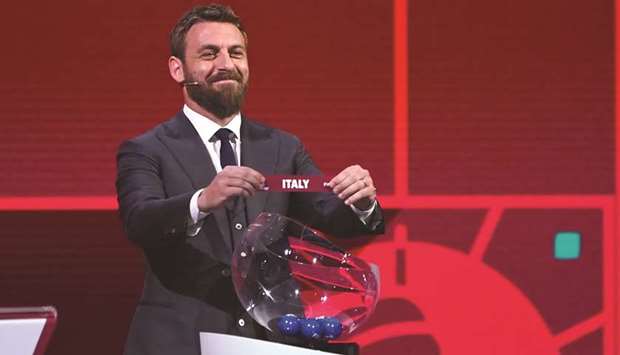Holders France were handed an awkward draw in qualifying for the Qatar 2022 World Cup yesterday, with Ukraine and Bosnia and Herzegovina standing in their way on the road to the finals, while England will face Robert Lewandowski and Poland in their group.
Gareth Southgate’s England, semi-finalists at the 2018 tournament in Russia, will also take on Hungary and Albania as well as two of the minnows of international football, Andorra and San Marino, in Group I.
France will also face Finland — who recently beat Les Bleus in a friendly in Paris — in Group D, with Kazakhstan completing the group that was drawn in a virtual ceremony at FIFA’s headquarters in Zurich due to the Covid-19 pandemic. Didier Deschamps’ side are in a group of just five teams because they will be involved in the finals of the UEFA Nations League in Italy in October next year. One of the most significant results of Deschamps’ time in charge of France came in qualifying for the 2014 World Cup, when his side faced Ukraine in a deciding play-off. They lost 2-0 in the first leg in Kiev before winning 3-0 in the return.
As for England, it is the seventh time they have been drawn with Poland in World Cup qualifying. Their most recent encounters came in the campaign for the 2014 finals in Brazil, with the sides drawing 1-1 in Warsaw before England triumphed 2-0 at Wembley. Most famously, England missed out on a place at the 1974 World Cup after losing 2-0 in Poland and then being held 1-1 at Wembley.
The European qualifying competition begins next March, with a total of 13 countries from the continent going through to the 32-team finals. There will be three rounds of fixtures in March, three more in September and then two each in October and November. That will only increase the pressure on a fixture calendar that is already packed, especially with the postponed Euro 2020 set to go ahead in June and July, 2021. That means a team that reaches the final of Euro 2020 can expect to play 17 competitive games between March and November next year.
Only the winners of each of the 10 groups will qualify automatically for the finals, which are to take place in November and December of 2022. The 10 runners-up will go into play-offs alongside the two best Nations League group winners who miss out on qualifying via the traditional path. Those play-offs, in March 2022, will produce three more qualifiers in total.
Germany, whose coach Joachim Loew has been under severe pressure after a run of poor recent results for the 2014 World Cup winners, will be expected to come through a group in which Romania and Iceland appear their main threats.
Elsewhere, reigning European champions Portugal’s main opposition will come from Serbia and the Republic of Ireland in Group A. Cristiano Ronaldo will be 37 by the time the finals come around. Spain notably drew Sweden and Greece in Group B, while Italy must take on Switzerland in Group C.
Belgium, the world’s top-ranked team, will meet Wales in Group E. The sides met in the Euro 2016 quarter-finals with Wales coming out on top.
After qualifying for Euro 2020 to reach their first major tournament since the 1998 World Cup, Scotland were handed just about as kind a draw as possible on the road to 2022 as they were placed in Group F with Denmark and Austria. World Cup qualifying has already started elsewhere, including in South America which began its marathon 10-team round-robin tournament in October. There will be four direct qualifiers from Asia to join hosts Qatar, four from South America, while Africa will have five qualifiers. Three teams will progress from the North, Central America and Caribbean zone, with the remaining two berths awarded to the winners of inter-continental play-offs scheduled for June 2022.

Former Italian player Daniele De Rossi holds the slip of Italy during the UEFA preliminary draw for the FIFA Qatar World Cup 2022 yesterday in Zurich. (AFP)
